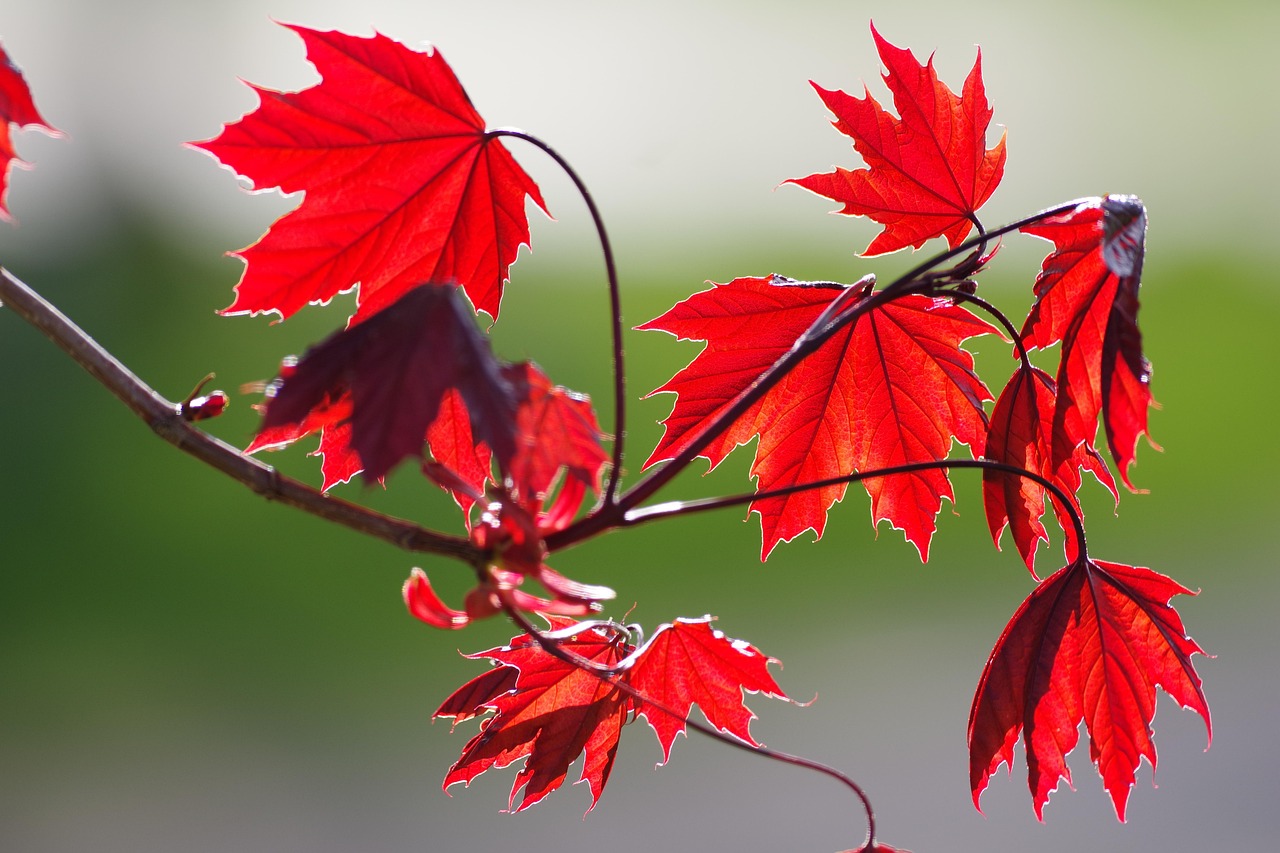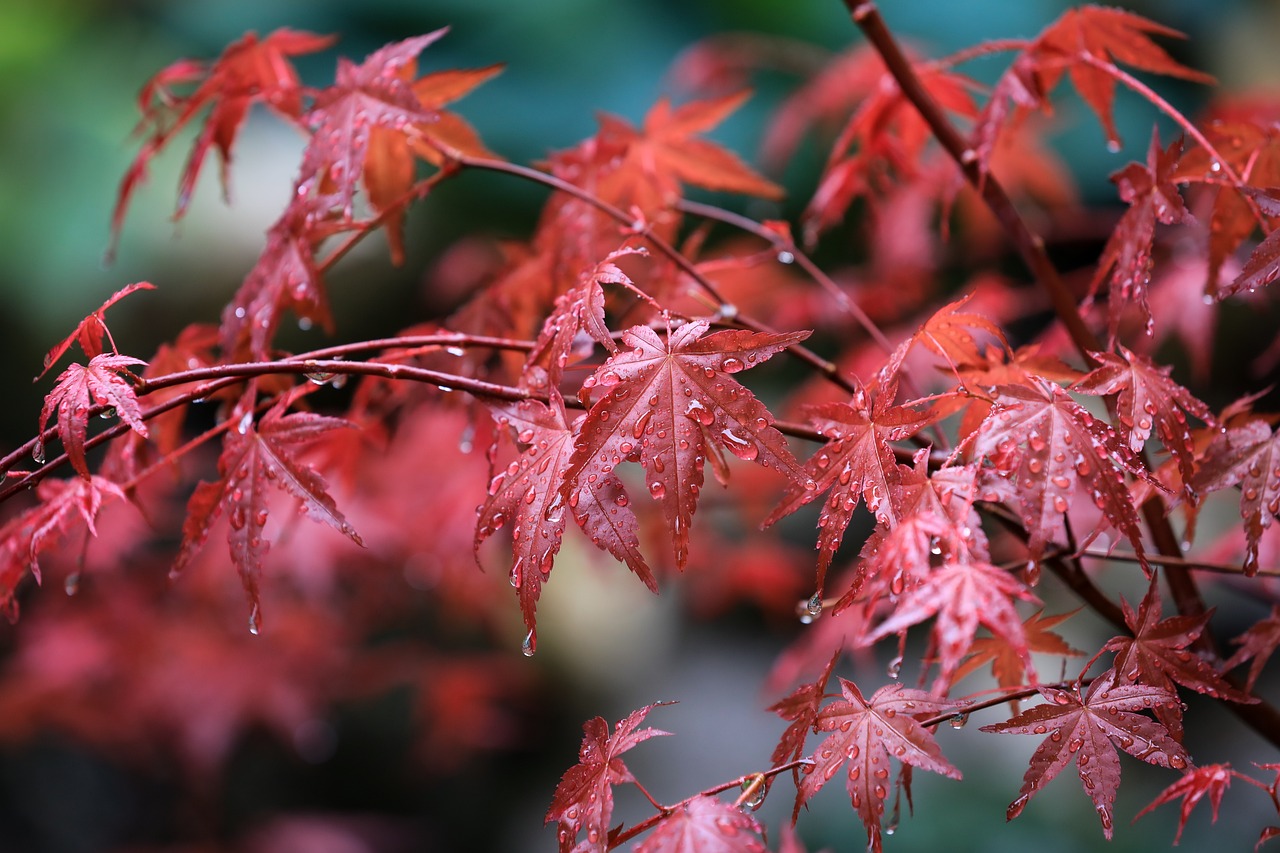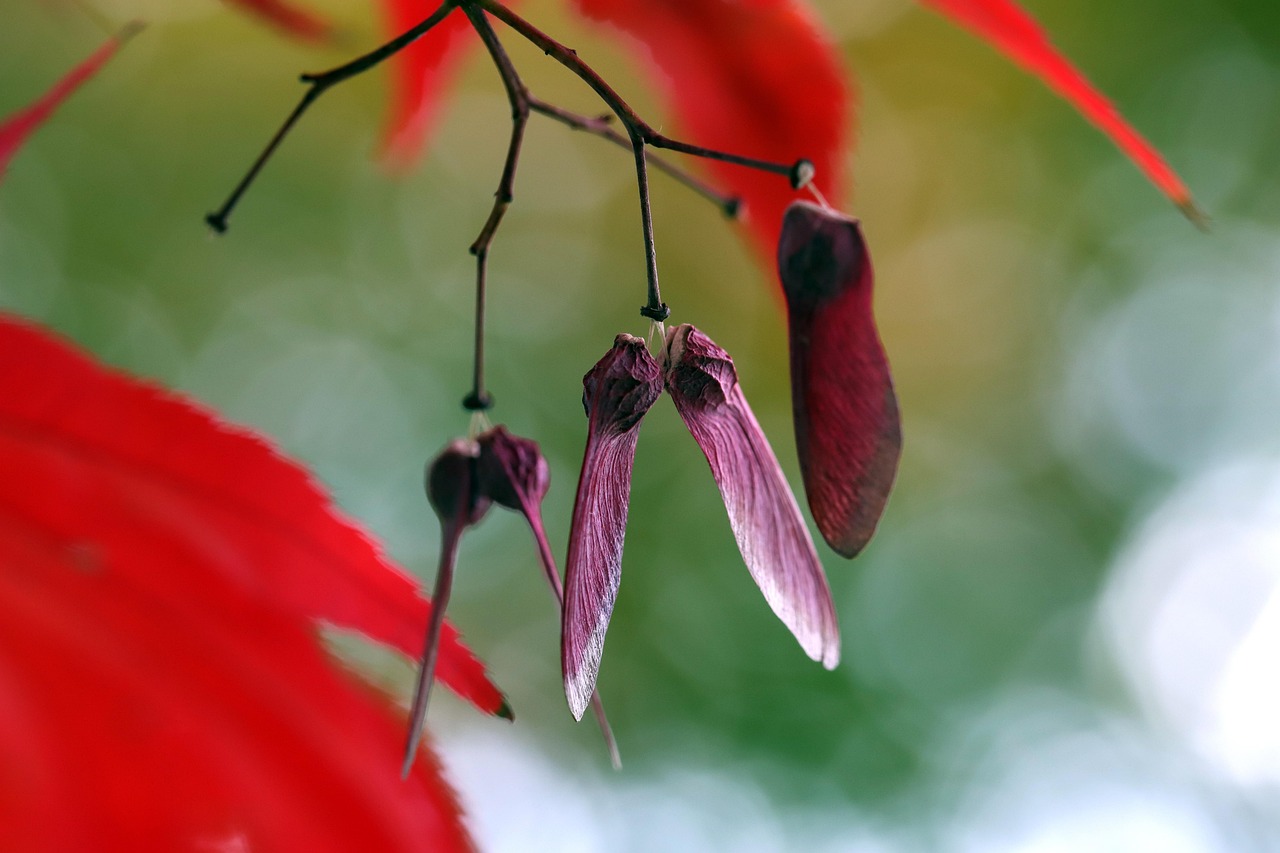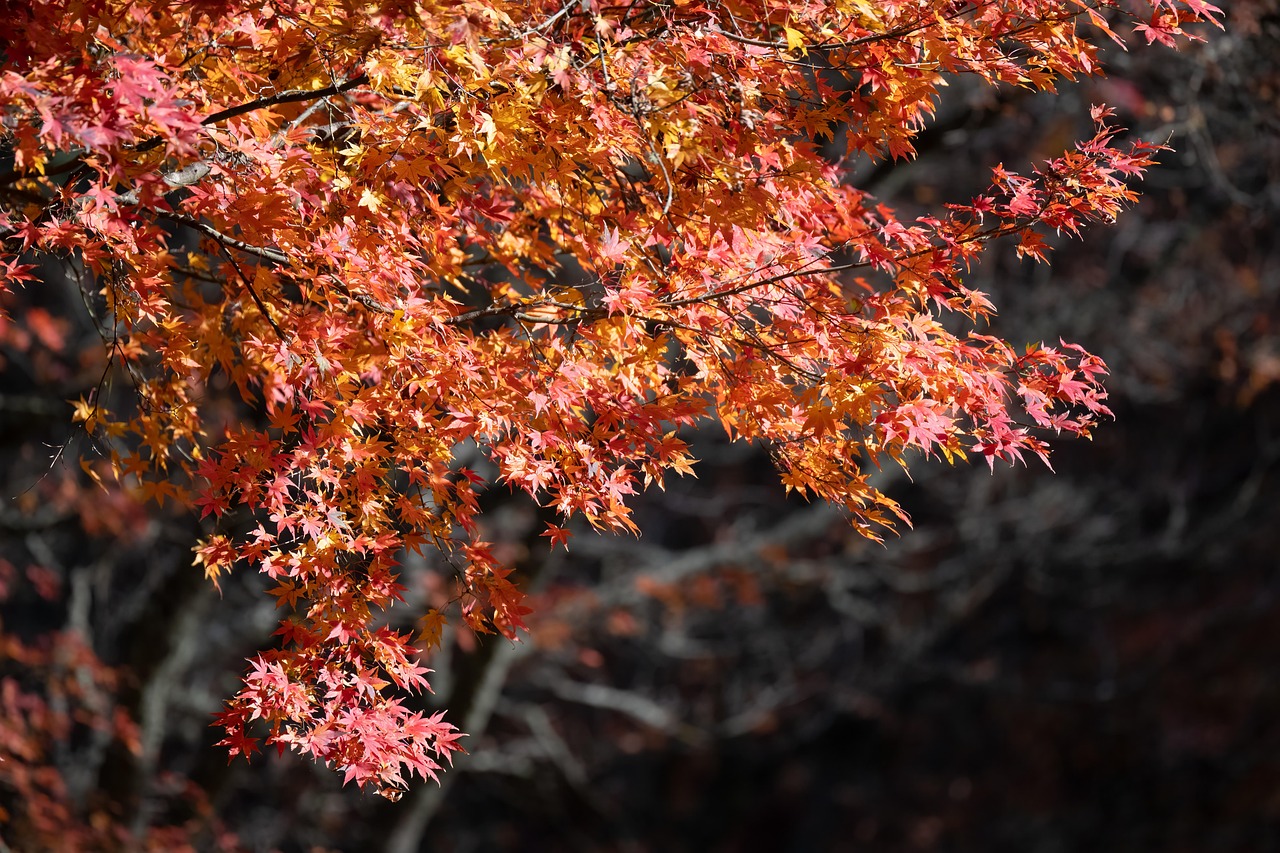Yes, red maple trees can produce sap that is used to make syrup. However, it is less common than syrup made from sugar maples. Red maple syrup has a unique flavor and offers various uses and benefits.
Understanding the Red Maple Tree

The red maple tree, scientifically known as Acer rubrum, is a native species found across much of North America. It is easily recognized by its vibrant red flowers in spring and its stunning foliage in the fall. Red maples can thrive in a variety of soil types and are often found in wetland areas, making them adaptable and resilient. The tree can grow to heights of 40 to 60 feet, providing shade and beauty to residential landscapes.
While the sugar maple (Acer saccharum) is the preferred species for syrup production due to its higher sugar content in the sap, red maples also yield sap that can be harvested for syrup. The sap from red maples has a lower sugar concentration compared to sugar maples, typically ranging from 1.5% to 3% sugar content. This means that more sap is required to produce the same amount of syrup.
Harvesting Sap from Red Maples
The process of harvesting sap from red maples is similar to that of sugar maples. It begins in late winter or early spring when temperatures fluctuate above and below freezing. These temperature changes create pressure in the tree, causing sap to flow from the tree’s vascular system. To collect the sap, a small hole is drilled into the trunk of the tree, and a tap is inserted. Buckets or tubing are then used to catch the flowing sap.
It is essential to follow sustainable practices when tapping trees to ensure their long-term health. Tapping should be done carefully, and only healthy trees should be tapped. The general recommendation is to tap trees that are at least 10 inches in diameter, allowing for one tap per tree for every additional 10 inches in diameter.
Uses of Red Maple Syrup
Red maple syrup can be used in various culinary applications. Although it may not be as popular as sugar maple syrup, it offers its own distinct flavor profile. Here are some common uses:
- Pancakes and Waffles: Red maple syrup can be drizzled over breakfast favorites, adding a sweet and slightly tart flavor.
- Cooking and Baking: It can be used as a sweetener in various recipes, including marinades, dressings, and desserts.
- Flavoring Beverages: Use it to sweeten teas, coffee, or cocktails for a unique twist.
- Glazing Meats: It makes an excellent glaze for meats like ham or chicken, enhancing their flavor.
The Benefits of Red Maple Syrup
In addition to its culinary uses, red maple syrup also offers several benefits. Here are some notable advantages:
- Nutritional Value: Red maple syrup contains essential minerals like manganese, zinc, and calcium, making it a healthier alternative to refined sugars.
- Antioxidant Properties: It has been found to contain antioxidants that can help combat oxidative stress in the body.
- Natural Sweetener: As a natural product, red maple syrup does not contain artificial additives or preservatives, making it a cleaner option for sweetening foods.
Flavor Comparison
The flavor of red maple syrup differs from that of sugar maple syrup. While sugar maple syrup is known for its rich and buttery taste, red maple syrup tends to have a lighter, more floral flavor with hints of caramel. Here is a simple comparison:
| Type of Syrup | Flavor Profile | Common Uses |
|---|---|---|
| Sugar Maple Syrup | Rich and buttery | Pancakes, baking, cooking |
| Red Maple Syrup | Light and floral | Drizzling, glazing, flavoring |
Ultimately, while red maple syrup may not hold the same popularity as its sugar counterpart, it offers unique flavors and potential benefits that can enhance various dishes and beverages.
Comparing Red Maple Syrup to Other Types of Syrup
When discussing syrup options, it is helpful to compare red maple syrup not only with sugar maple syrup but also with other syrup varieties. This comparison illustrates the unique characteristics of red maple syrup and highlights its place in the market.
Other Common Syrup Varieties
Here are some popular types of syrup that are commonly used:
- Agave Syrup: Extracted from the agave plant, this syrup is often marketed as a healthier alternative to sugar due to its low glycemic index.
- Honey: A natural sweetener produced by bees, honey has a distinct flavor that varies depending on the nectar source.
- Corn Syrup: Made from corn starch, this syrup is commonly used in commercial food products and is known for its sweetness.
- Palm Sugar: Derived from the sap of various palm trees, it is a traditional sweetener in many cultures and is often used in Asian cuisine.
Syrup Flavor Profiles
Each type of syrup has its own flavor profile that can influence its culinary applications. Here is a brief overview of how red maple syrup compares with other syrups:
| Type of Syrup | Flavor Profile |
|---|---|
| Red Maple Syrup | Light and floral with caramel notes |
| Agave Syrup | Mildly sweet with a hint of caramel |
| Honey | Varies greatly; generally floral or fruity |
| Corn Syrup | Sweet and neutral |
| Palm Sugar | Caramel-like flavor with earthy undertones |
The Process of Making Red Maple Syrup
The process of turning sap into syrup involves several key steps. Understanding this process can provide insight into why red maple syrup has a unique taste and quality.
Sap Collection
Once the trees are tapped, sap collection begins. The sap is typically collected in buckets or through tubing systems that transport the sap directly to a storage tank. The sap must be collected regularly to prevent spoilage.
Evaporation
The next step is evaporation. Sap contains a significant amount of water, and this process reduces the water content to concentrate the sugars. The sap is boiled in large evaporators until it reaches a syrup consistency. This can take several hours, and during this time, the temperature must be carefully monitored.
Filtering
After evaporation, the syrup must be filtered to remove any impurities or sugar sand, which can affect the final product’s clarity and taste. Filtering ensures a smooth texture that enhances the syrup’s appeal.
Bottling and Storage
Once filtered, the syrup is ready for bottling. It is important to store red maple syrup in airtight containers to maintain freshness. Proper storage can extend its shelf life, allowing consumers to enjoy it for months or even years.
Nutritional Considerations of Red Maple Syrup

As consumers become more health-conscious, understanding the nutritional profile of sweeteners like red maple syrup is essential. Here are some key nutritional aspects:
- Calories: Red maple syrup contains approximately 50 calories per tablespoon, making it a caloric option compared to some artificial sweeteners.
- Sugars: It primarily consists of natural sugars, mainly sucrose, which provides quick energy.
- Vitamins and Minerals: It contains small amounts of potassium, calcium, and magnesium, contributing to its nutritional value.
- Antioxidants: Red maple syrup has been shown to contain antioxidants that can help reduce inflammation and oxidative stress.
These nutritional considerations make red maple syrup an appealing option for those looking for natural sweeteners while still being mindful of their dietary choices.

2>Potential Health Benefits of Red Maple Syrup
Red maple syrup not only serves as a flavorful sweetener but also offers several health benefits. Understanding these benefits can help consumers make informed choices about incorporating it into their diets.
Anti-Inflammatory Properties
Research indicates that red maple syrup contains compounds with anti-inflammatory effects. These compounds may help reduce inflammation in the body, which is linked to various chronic diseases. Regular consumption of red maple syrup in moderation may contribute to overall health.
Supports Digestive Health
The natural sugars in red maple syrup can promote a healthy digestive system. Additionally, the presence of small amounts of minerals helps maintain proper gut function. Some individuals find that natural sweeteners like red maple syrup are easier to digest than highly processed sugars.
Potential Heart Health Benefits
Including red maple syrup in a balanced diet may support heart health due to its antioxidant content. Antioxidants help combat oxidative stress, which can damage blood vessels and lead to cardiovascular issues. Some studies suggest that consuming antioxidant-rich foods can contribute to improved heart function.
Culinary Uses: Creative Ways to Incorporate Red Maple Syrup
Red maple syrup’s unique flavor makes it a versatile ingredient in the kitchen. Below are some creative ways to use red maple syrup in various dishes and applications.
Breakfast Dishes
Red maple syrup can elevate traditional breakfast items. Here are some popular options:
- Pancakes and Waffles: A classic pairing, red maple syrup adds sweetness and flavor to fluffy pancakes and crispy waffles.
- Oatmeal: Drizzling red maple syrup over oatmeal can enhance its taste and provide a natural sweetness.
- Smoothies: Use it as a natural sweetener in smoothies for an added flavor boost.
Baking Recipes
In baking, red maple syrup can replace refined sugars in various recipes. Here are some ideas:
- Muffins: Substitute red maple syrup for sugar in muffin recipes for a moist texture and richer flavor.
- Cakes: Incorporate red maple syrup into cake batters for added sweetness and complexity.
- Cookies: Use it in cookie recipes to create chewy, flavorful treats.
Savory Dishes
Red maple syrup is not just for sweet dishes; it can also enhance savory meals. Consider the following applications:
- Glazes: Create a sweet and tangy glaze for roasted vegetables or meats by mixing red maple syrup with balsamic vinegar or mustard.
- Dressings: Incorporate red maple syrup into salad dressings for a balanced flavor that complements greens and vegetables.
- Marinades: Use it in marinades for grilled meats or tofu to add a unique flavor profile.
Storage Tips for Red Maple Syrup
Proper storage of red maple syrup is essential to maintain its quality and flavor. Here are some tips for storing it effectively:
Refrigeration
Once opened, it is best to keep red maple syrup in the refrigerator. Refrigeration helps slow down the growth of bacteria and mold, ensuring the syrup remains safe to consume. Store it in a tightly sealed container to prevent absorption of odors from other foods.
Avoiding Contamination
To avoid contamination, always use clean utensils when serving syrup. This will help prevent introducing bacteria or other contaminants into the container.
Freezing for Long-Term Storage
If you have a large quantity of red maple syrup that you won’t use immediately, consider freezing it. Maple syrup freezes well and can be stored in airtight containers or freezer bags. When ready to use, simply thaw it in the refrigerator before serving.
Environmental Impact of Maple Syrup Production
The

production of maple syrup, including red maple syrup, has environmental implications that should be considered. Understanding these impacts can help consumers make sustainable choices.
Sustainable Harvesting Practices
Responsible tapping practices are crucial for maintaining healthy forests. Sustainable harvesting involves:
- Tapping Only Healthy Trees: Ensure that only mature trees are tapped to promote long-term health.
- Avoiding Over-Tapping: Limiting the number of taps per tree prevents stress on individual trees.
- Timing Harvests: Harvesting sap during appropriate seasons ensures minimal impact on tree health.
Biodiversity Preservation
The cultivation of sugar and red maples can contribute positively to local ecosystems. Maintaining healthy forests helps support biodiversity and provides habitats for various species.
Carbon Sequestration
Trees play a vital role in carbon sequestration, absorbing carbon dioxide from the atmosphere. By supporting sustainable maple syrup production, consumers can contribute to forest conservation efforts and promote environmental health.
Exploring the Market for Red Maple Syrup
The market for red maple syrup has been growing as consumers seek unique flavors and natural alternatives to refined sugars. Unlike the traditional sugar maple syrup, red maple syrup offers a distinct taste profile that appeals to a niche audience.
Consumer Trends
In recent years, there has been a noticeable shift toward organic and locally sourced products. Consumers are increasingly aware of the benefits of supporting local agriculture and sustainable practices. As a result, red maple syrup has found its place among artisanal products that emphasize quality and craftsmanship.
Price Considerations
The pricing of red maple syrup can vary based on several factors, including:
- Harvesting Practices: Syrup produced through sustainable and organic methods may command a higher price.
- Flavor Quality: Premium syrups with distinctive flavors may also be priced higher due to their uniqueness and demand.
- Packaging: Attractive packaging can influence consumer perception and willingness to pay.
Market Opportunities
As more consumers explore diverse flavors, there is potential for red maple syrup to carve out a larger market share. Opportunities include:
- Gourmet Food Products: Incorporating red maple syrup into gourmet sauces, dressings, and marinades could expand its usage.
- Culinary Collaborations: Partnering with chefs and restaurants to feature red maple syrup in innovative dishes can increase its visibility.
- Online Retail: E-commerce platforms provide an avenue for producers to reach consumers beyond local markets.
Challenges Facing Red Maple Syrup Producers
Despite its potential, red maple syrup producers face several challenges that can impact growth in the industry. Addressing these challenges is essential for sustainability and profitability.
Competition from Other Sweeteners
The market is saturated with various sweeteners, including agave, honey, and corn syrup. These alternatives often have lower price points and wider availability, which can overshadow red maple syrup.
Environmental Factors
The production of red maple syrup is highly dependent on climate conditions. Fluctuations in temperature or changes in weather patterns can affect sap flow, impacting overall yield. Producers must adapt to these changes to maintain consistent production levels.
Consumer Awareness
Many consumers may not be familiar with the distinct qualities of red maple syrup. Increasing awareness through marketing campaigns and educational initiatives can help position red maple syrup as a desirable choice among sweeteners.
Final Thoughts
Red maple syrup presents unique opportunities for consumers and producers alike. Its distinct flavor profile, potential health benefits, and versatility in culinary applications make it an appealing choice for those seeking natural sweeteners. However, challenges such as competition from other sweeteners and environmental factors must be navigated carefully.
As the market for red maple syrup continues to evolve, consumer awareness and appreciation for this flavorful syrup will play a critical role in shaping its future. By promoting sustainable practices and fostering connections between producers and consumers, red maple syrup can thrive as an essential part of the culinary landscape.
Ultimately, whether enjoyed drizzled over pancakes or incorporated into savory dishes, red maple syrup offers a delightful experience that celebrates the richness of nature’s bounty.
